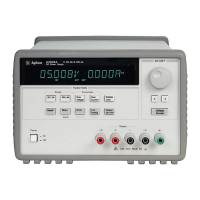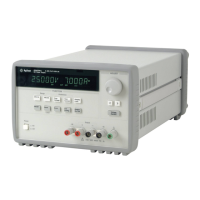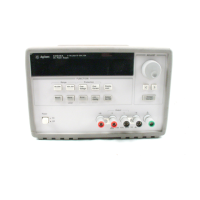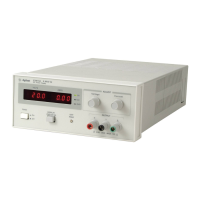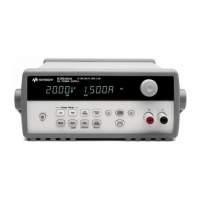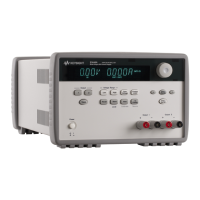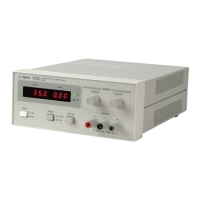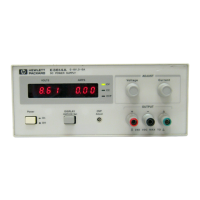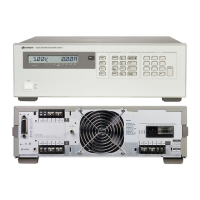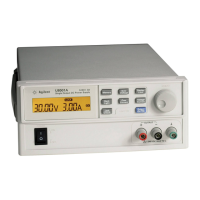Chapter 3 Front-Panel Operation
System-Related Operations
48
Display Control
For security reasons, you may want to turn off the front-panel display. From the remote
interface, you can display a 12-character message on the front panel.
The display can be enabled / disabled from the remote interface only.
• When the display is turned off, outputs are not sent to the display and all annunciators
are disabled except the ERROR annunciator. Front-panel operation is otherwise
unaffected by turning off the display.
• The display state is stored in volatile memory; the display is always enabled when
power has been off, after a remote interface reset, or after returning to local from
remote.
• You can display a message on the front panel by sending a command from the remote
interface. The power supply can display up to 12 characters of the message on the
front panel; any additional characters are truncated. Commas, periods, and semicolons
share a display space with the preceding character, and are not considered individual
characters. When a message is displayed, outputs are not sent to the display.
• Sending a message to the display from the remote interface overrides the display state;
this means that you can display a message even if the display is turned off.
The display state is automatically turned on when you return to the local (front panel)
operation. Press the key to return to the local state from the remote interface
• Remote interface operation:
DISPlay {OFF|ON} Disable / enable the display
DISPlay:TEXT
<quoted string> Display the string enclosed in quotes
DISPlay:TEXT:CLEar Clear the displayed message
The following statement shows how to display a message on the front panel from a
Agilent Technologies controller.
"DISP:TEXT ’HELLO’"
